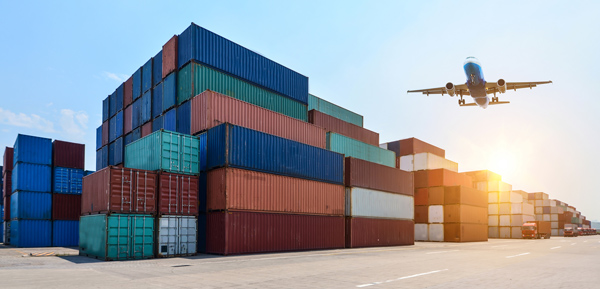Global Supply Chain Issues
Since the start of the pandemic, supply chains have been under pressure, although towards the beginning of 2022 there were signs that the disruptions to the global supply chain were easing but this is no longer the case.
Geopolitical tensions, specifically with the impact of the Russia-Ukraine conflict and Covid lockdowns in China have added to global supply issues, specifically impacting sectors like consumer goods, food, and commodities.
The global supply chain is also experiencing challenges when it comes to the shift in demand, labour shortages, equipment availability, and the impact of global bottlenecks. We have seen global container shipping rates increase dramatically and add to that, delays in some of the key trading routes.
Where did it all begin?
As we all know the issues began with the onset of Covid 19 which saw ports and factories around the world shutting down, this caused a massive slowdown of goods around the globe. We slowly started to return to some sense of normality, only to be hit with variant after variant, leading once again to closures throughout last year.
Now that most countries are back on track, we have seen a sharp increase in consumer demand, far stronger than was expected. The combination of supply chain shortages and increased consumer demand has led to unprecedented disruptions. Take for instance the recent shortage of baby formula in the US
Geopolitical tensions
The Russia-Ukraine war has made it more difficult to move goods as shipping routes have been blocked. We have seen both the EU and the UK ban Russian ships from docking at their ports. These sanctions on Russia have disrupted the flow of goods and the impact on commodities has been most noticeable, with the oil price being a key feature.
The continued closures in China of cities and production facilities, specifically the huge lockdowns in Beijing and Shanghai have also caused major disruptions, reducing the supply of goods used for production. The ripple effect will continue to be felt for a while.
Business continuity
For the first time companies are taking a serious look at their supply chain management, previously this has just been something that happened. Logistics has been an area that has been taken for granted as historically the costs and expected transport times were predictable. Companies did not place that much importance on the distance and shipping when looking at their sourcing strategies.
A survey by McKinsey reported that “Supply-chain disruptions now outweigh COVID-19 concerns as the biggest risks executives see to domestic and corporate growth.” And some commentators are indicating that the current supply chain shortages are the worst we have seen in the past 50 years.
Companies and consumers alike have had to deal with stock shortages, delays in orders being filled, and massive backorders on popular goods.
Supply chain challenges
Material shortages are a key challenge and a survey by the Institute of Supply Management (ISM) showed “record-long lead times, wide-scale shortages of critical basic materials, rising commodities prices, and difficulties in transporting products across industries.”
As previously mentioned, freight prices have increased dramatically on the back of massive demand which has led to insufficient shipping capacity and a shortage of empty or available containers.
Other challenges include demand forecasting and port congestion where ships are unable to load their freight due to capacity constraints. Demand forecasting has been a challenge, especially with the unexpected shift in consumer demand. Companies are now looking at how they can improve their forecasts/predictions for customer demand.
Moving forward
It looks like the global supply chain will continue to experience disruptions for at least the next year. Companies are taking steps to get ahead by increasing liquidity and ensuring they have easy access to capital. Another strategy has been to develop multiple relationships with various suppliers and diversifying the sourcing from a geographical perspective.
Companies are having to become flexible and nimble and more selective when choosing their partners to continue to thrive in this challenging environment.
Source: Blue Planet Logistics

